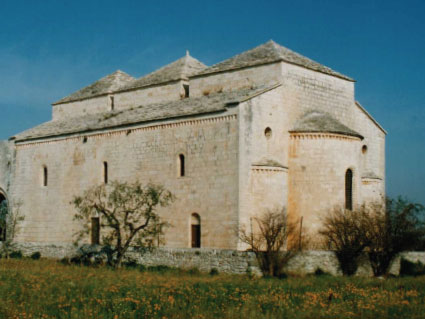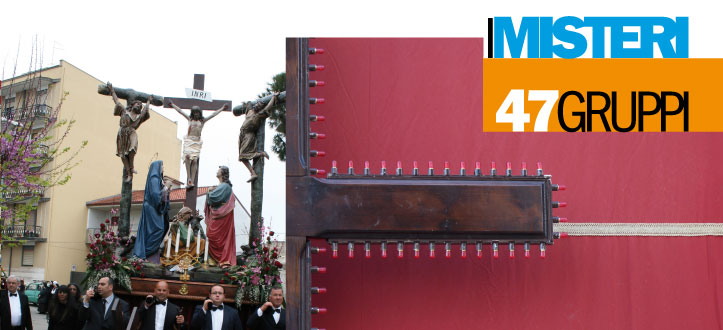





47 groups of statues bear witness to an intensely popular event. On Good Friday, forty-seven Mysteries are carried in procession through the city of Valenzano. With the exception of the dead Christ and Our Lady of Sorrows, the Mysteries belong to private individuals rather than to Confraternities, or Churches, as is the case in all of the other towns. The Madonna is the character that is most often seen with Christ, unlike in the Gospels. Individual statues are set against groups, almost as if they were meant to interrupt the story, as if to create a moment of reflection where one can feel the blend of emotions and tensions that are brought forth by this narrative sequence. The statue bearers are not brothers of a confraternity, they are friends and relatives of the Mystery owner. They do not have to compete against each other to attain the role of statue bearer and they are not paid to carry the statues, they simply share a thanksgiving meal together.
Each Mystery has about eight to sixteen bearers; in some cases, they even wear a crown of thorns and flog themselves. At least four girls accompany each Mystery, dressed in black and wearing the “quadrata”, a veil that covers them from head to toe. Some of the Mysteries are preceded by children who are dressed as Jesus Christ and Our Lady of Sorrows, and the Empress Helena can also be seen. Within the limits of the role, the statue bearers, girls, and children are always the same, a sort of familiarity having been established between them, the owner, and the characters of the story being represented. People participate in this event with intensity, sincerity and with great emotion. Since 1675, the number of Mysteries has grown each year, and the procession has never been put aside or forgotten. Even socio-economic changes have not affected this tradition in any way. In fact, the tradition maintains its secular stratification and is renewed and enriched from year to year. This vitality makes the procession of the Mysteries, and its numerous representations, an unprecedented event and compelling proof of the religiosity of the common people.

